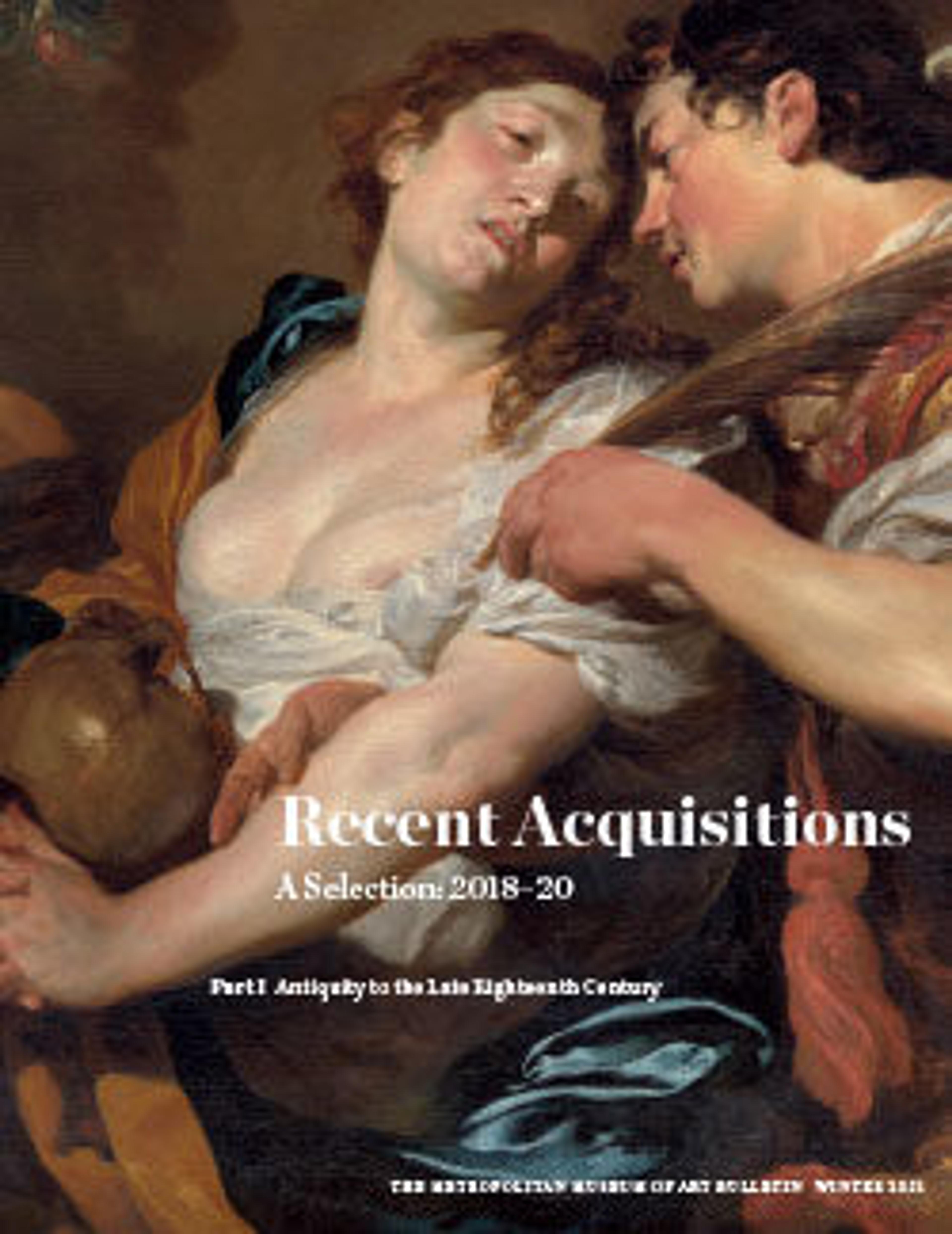Fragment with the head of a man
The head of a man facing left is depicted in raised relief. The large scale of the figure suggests that this image is not part of a hieroglyph and that the head belongs to a figurative scene. His simple short wig indicates that he is non-royal. The figure might represent an offering bearer or priest, who often wear this hairstyle, or he could be a high official, who can also at times wear this type of wig.
The piece is made out of Egyptian faience, a non-clay ceramic material, and is a fragment of a larger, unidentified object about two centimeters in thickness. The figure is shown in bright blue on a darker blue background. Small, flat areas of the original glazed surface are preserved on the top and back of the piece. In addition, there is a very small bit of blue glaze on the right side, indicating that this is part of the right edge of the original piece. The space available above the figure is narrow and probably too small for an inscription, so it is most likely that the space at the very top of the piece was empty.
The piece is made out of Egyptian faience, a non-clay ceramic material, and is a fragment of a larger, unidentified object about two centimeters in thickness. The figure is shown in bright blue on a darker blue background. Small, flat areas of the original glazed surface are preserved on the top and back of the piece. In addition, there is a very small bit of blue glaze on the right side, indicating that this is part of the right edge of the original piece. The space available above the figure is narrow and probably too small for an inscription, so it is most likely that the space at the very top of the piece was empty.
Artwork Details
- Title: Fragment with the head of a man
- Period: Middle Kingdom
- Dynasty: Dynasty 12–13
- Date: ca. 1981–1650 B.C.
- Geography: Country of Origin Egypt, Memphite Region, Lisht North, MMA excavations, 1906–11
- Medium: Faience
- Dimensions: H. 4.1 × W. 3.7 × D. 2.2 cm (1 5/8 × 1 7/16 × 7/8 in.)
- Credit Line: Funds from various donors, 2018
- Object Number: 2018.133
- Curatorial Department: Egyptian Art
More Artwork
Research Resources
The Met provides unparalleled resources for research and welcomes an international community of students and scholars. The Met's Open Access API is where creators and researchers can connect to the The Met collection. Open Access data and public domain images are available for unrestricted commercial and noncommercial use without permission or fee.
To request images under copyright and other restrictions, please use this Image Request form.
Feedback
We continue to research and examine historical and cultural context for objects in The Met collection. If you have comments or questions about this object record, please contact us using the form below. The Museum looks forward to receiving your comments.
